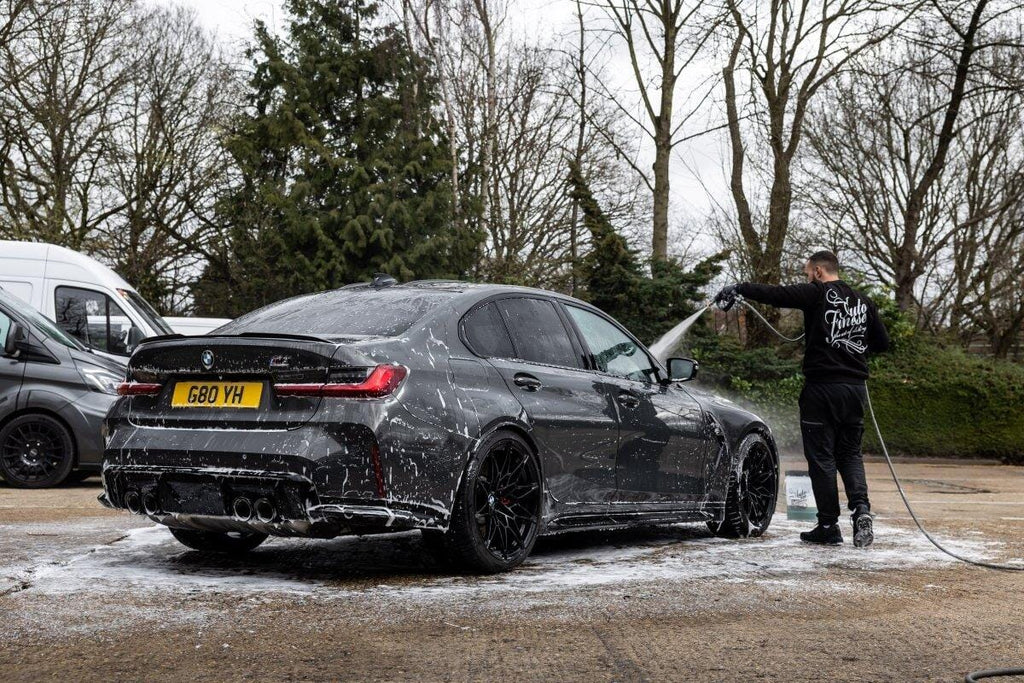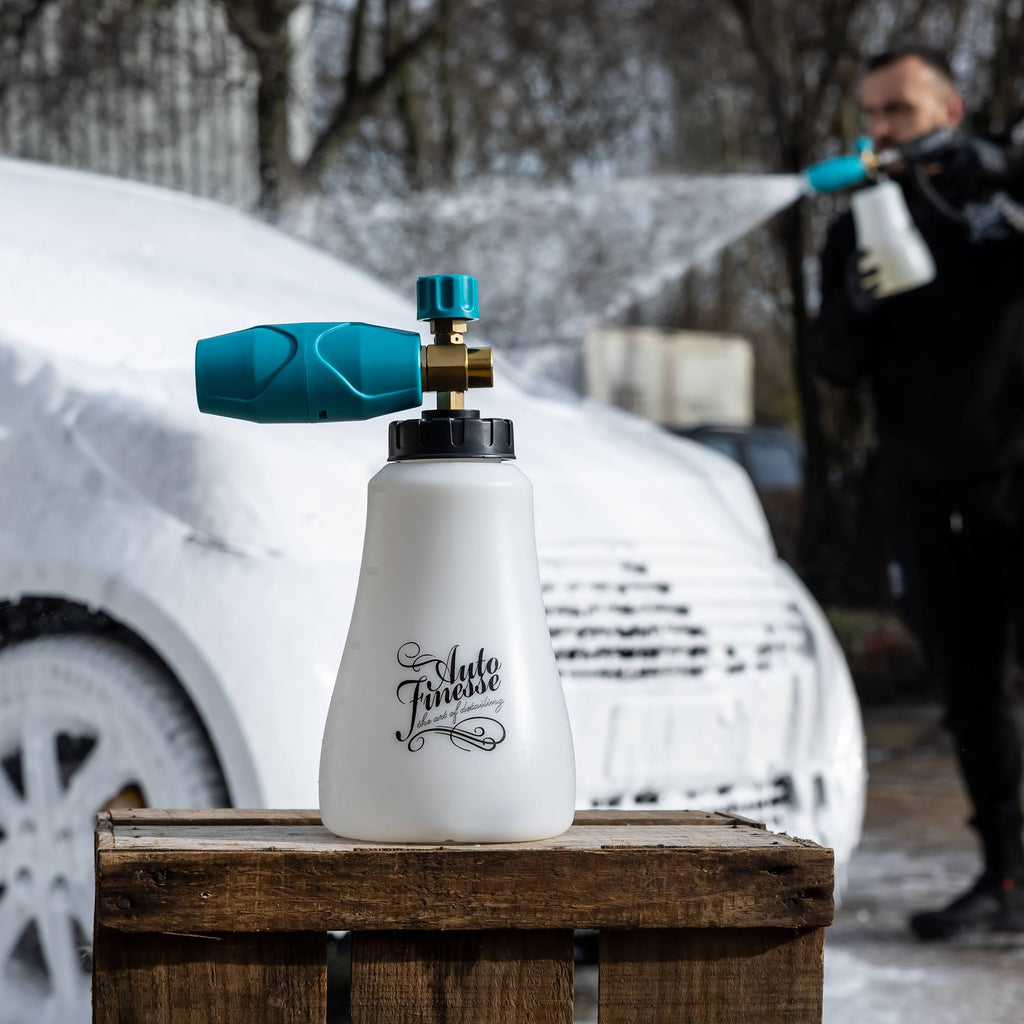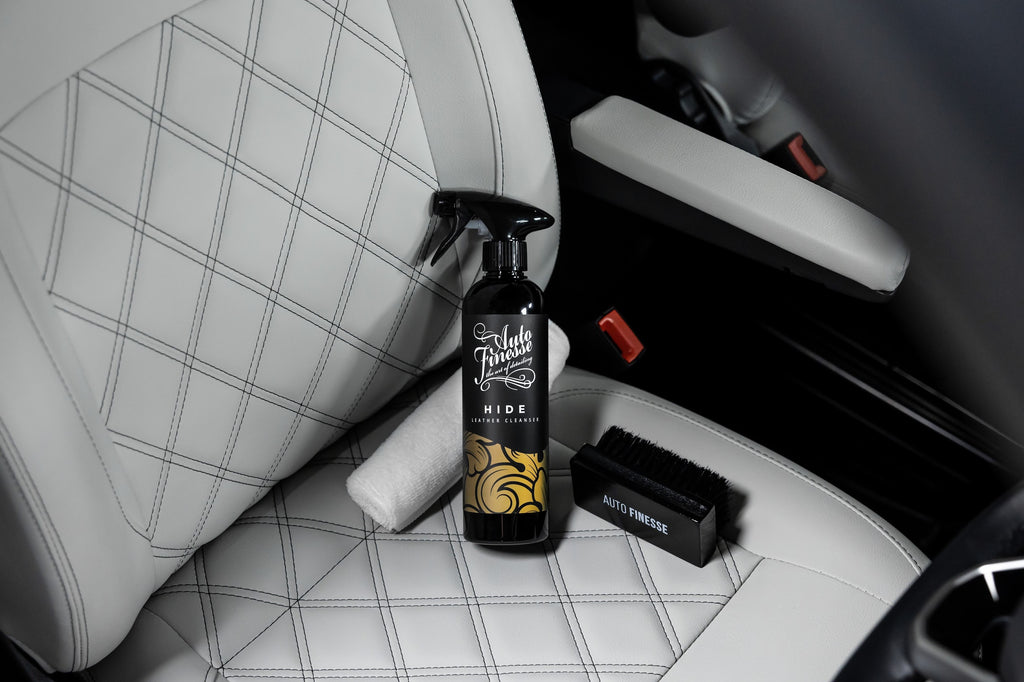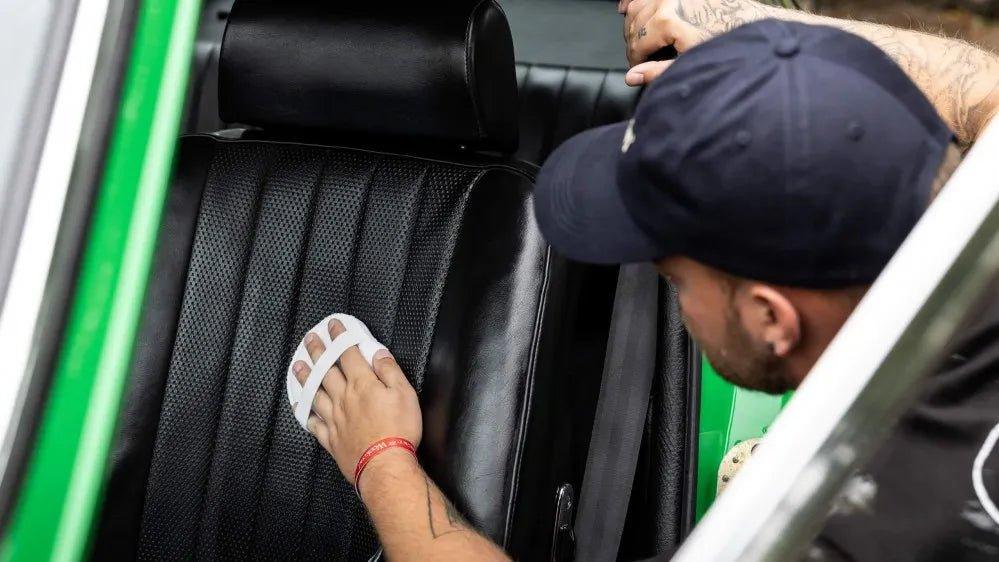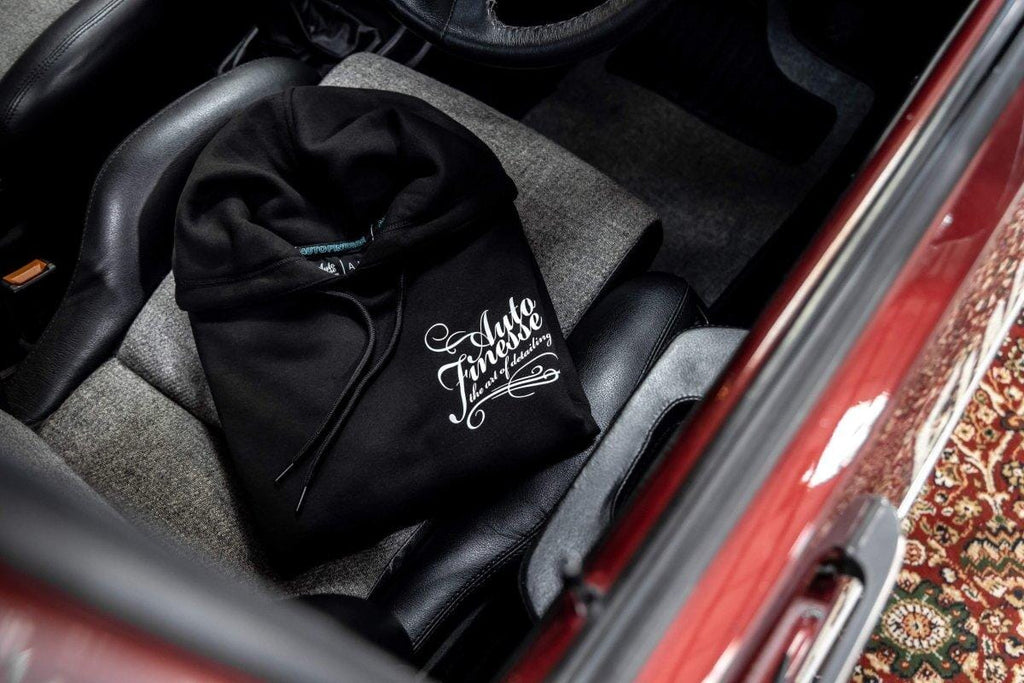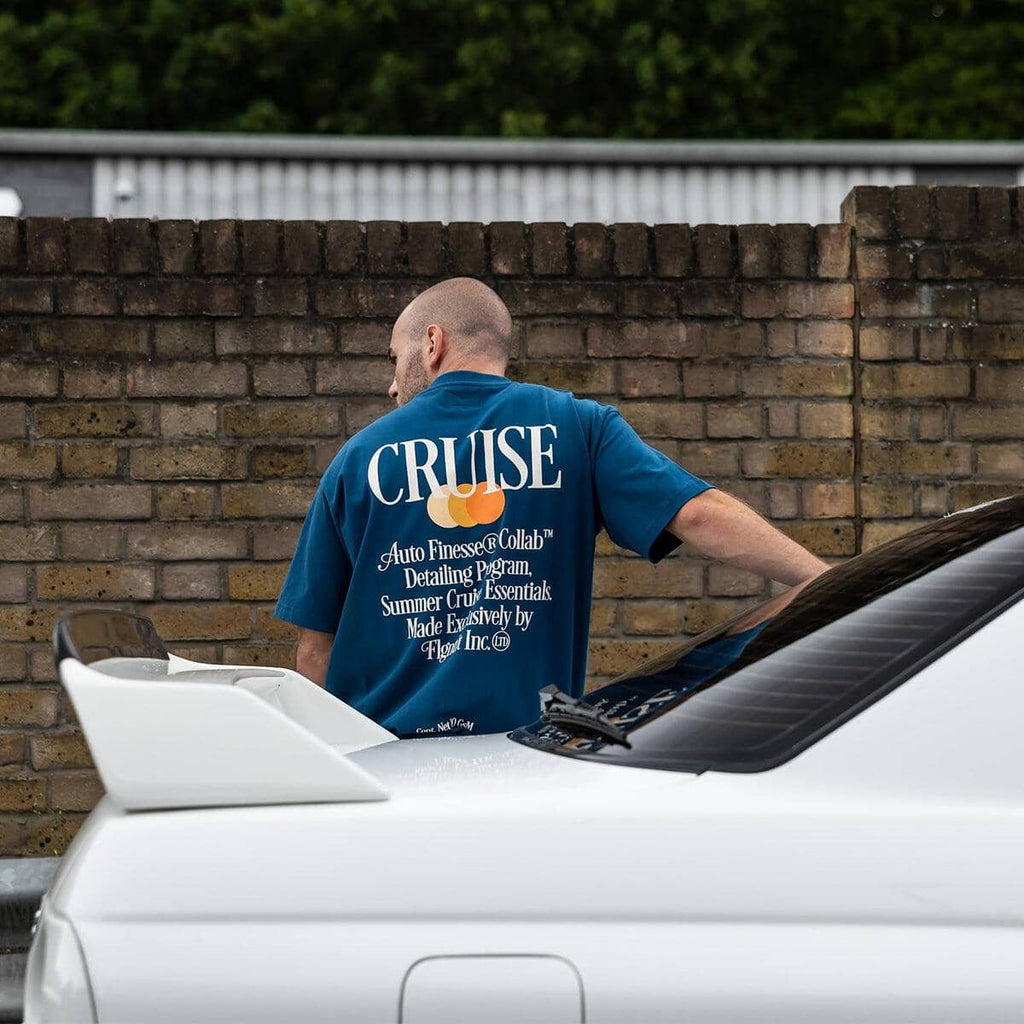How to Safely Decontaminate Your Paintwork

Although paint decontamination isn't necessary every time you wash your car, it's still an extremely important stage when it comes to any full detail. Put simply, carrying out a thorough "decon' reaches deeper into the surface than more regular maintenance washes can, removing all sorts of ingrained impurities, and setting you on the right path for further paint correction and finishing.
At the very least, we'd always recommend decontaminating your paint at least twice a year: once before the winter, to get it ready for the protection layers needed to see out the cold season. And once after, in order to eradicate all trace of the salt, brake dust and general grime abundant on the roads. But, even for dedicated detailing enthusiasts, four or five times a year on the same car is usually sufficient to get an impeccable finish.
But, what does the 'decon' actually involve? Quite simply a group of professional cleansing processes designed to get your paintwork cleaner than it's ever been before. Forget eating your dinner off it here - we're talking clean enough to perform open heart surgery on the bonnet (probably).
So, here's five easy steps to show you the products to use, and how to get the best results… even on a super-abused daily driver.









Citrus Power bug & grime remover is a versatile citrus pre-wash an essential that no car detailing kit should ever... See product details More




Dont stop at just a clay bar, the Auto Finesse® Paintwork Decontamination Kit is the perfect way to remove iron particles, tar and contamination from your vehi... See product details More
Step 1: Pre-Wash And Contact Wash
We say it time and time again, the wash stage is the most important process in detailing for ensuring a swirl-free paint finish. But, when it comes to adding decontamination of your paintwork into the mix, having an effective pre-wash and contact wash is even more important, because you'll be carrying out extra processes that come in direct contact with the surface of your paint. It goes without saying that dragging any grit and heavy soiling around is never a good thing, right?
So, with that in mind, before you even get to the decontamination stage, you'll need to prepare. And, the firmly established way to do this is by thoroughly pre-washing with a suitable chemical cleaner, like Dynamite Traffic Film Remover or Citrus Power Bug and Grime Remover. Follow that by using Avalanche Snow Foam and, by the time you rinse, you will have loosened and removed any heavy soiling.
After pre-washing, it's onto the contact wash, where you should always carry out a full two bucket wash before attempting decontamination, even if your car looks clean. As always start with the roof, along with any upward facing panels, and follow with the front, lower half and finish on the rear.
When you're happy that your car is as clean as it can be, you can finally get on with the more advanced decontamination stages, starting with the "decon wash'.




Step 2: Decon Wash
The decon wash stage is a process designed to remove the most harmful of ingrained contaminates - sharp metal particles. In many cases you may not be able to see these minute pieces of metal with the naked eye, but trust us, the vast majority of cars will have fallen foul of this type of contamination. And, if this metal is left to build up on the paint surface, it can cause severe oxidation problems down the line.
Metal contamination comes from a variety of sources, most commonly the abundance of brake dust you'll find produced, not just by your own car, but floating around in the air, especially the motorway. On a microscopic level, these sharp shards of ferrous (iron) material penetrate the surface of your paint, a problem that's only compounded with "fresh' brake dust, because it will be hot. The high temperatures caused by braking friction (or turning kinetic energy into thermal energy) helps these particles to burn so far into the surface of your paint, that they simply can't be removed with a traditional contact wash.
Contra to popular belief, metal particles won't just a problem on the lower half of your car, either. Very often you'll find ferrous contamination all over, including the roof. Other sources of this kind of iron fallout includes deposits thrown up from train lines… so, if you're a commuter forced to park at the station every day, you can see why your car will be particularly susceptible.
As we said, fallout removal is impossible by traditional methods, the only way to eradicate metal contamination safely is by dissolving through a chemical reaction. This why the decon wash stage involves using a product specially formulated for ferrous material removal - our Iron Out Contaminant Remover.
As long as the car is cool to the touch, Iron Out can be applied directly to paintwork, and you'll see the reaction take place almost immediately. As ferrous deposits are dissolved, they are temporarily highlighted, turning them blood red. For obvious reasons, this is referred to as "bleeding'. Once the reaction has taken place, the deposits can be rinsed away with clean water.
In most cases a single application will be enough to rid the surface of iron particles, but for extremely heavy contamination a second application can be sprayed on and worked into the surface with a microfibre pad. Once this is rinsed away, your paintwork should be free of metal contamination. If you're still unsure though, simply spray a small amount of Iron Out onto a microfibre or sponge pad, wipe across the surface, and look for a reaction. The bleeding will stop when all the metal has been eradicated.
Apart from ferrous fallout, other deposits that Iron Out Contaminant Remover will eliminate are jet fuel deposits ("aviation fallout'), along with the harsh staining commonly caused by diesel exhaust smoke.










Developed as a heavy-hitting ferrous fallout remover, Iron Out is an advanced decontamination remover in a reactive gel... See product details More




Step 3: Tar And Glue Removal
Some of the most stubborn contaminates you'll find anywhere are tar, adhesive residues, tree sap, rubber and fuel staining. Obviously, these stem from a variety of sources, but what's important is that they need to be removed from paint before further decontamination can take place. This is to minimise the possibility of scratching and marring when you move on to using clay… although, we'll get to that.
What most of these contaminates have in common is that they're sticky oil-based stains. To remove them you'll need a strong solvent-based formula, like ObliTARate, to dissolve them enough to allow them to be wiped away.
Working in small sections, simply spray on a light spritz of product and wipe over with a clean microfibre as soon as you see the stains start to bleed. You'll see that contaminates will immediately be lifted away on your cloth.
ObliTARate is formulated to melt away the even harshest staining, and this includes sticky wax coatings that cars come with from the factory, along with overspray and traffic cone rash. Once these contaminates are safely removed, it's essential to rewash the entire car with Lather Shampoo, this is to neutralise any remaining solvent or Iron Out residue left behind. After that you can dry as normal, and move onto the next step.








Auto Finesse® ObliTARate tar and glue remover, is a solvent-based formula that quickly dissolves stubborn tar and glue... See product details More


Step 4: Claying
Many see claying as something of a dark art, but in reality, it couldn't be simpler. It's the final step in cleansing your paintwork and the general idea is to remove deeply ingrained impurities that, most of the time, you won't be able to see. These include mineral deposits from water, tree sap and protein deposits from bugs and bird droppings… and that's just the organic stuff. A good quality detailing clay will also remove a good degree of inorganic industrial fallout and paint overspray. All this is important because even the smallest particles can eat away at your paintwork if left for long periods. Contamination of this sort builds up over time too, so claying really is an essential step in keeping your paint decontamination free. The truth of the matter is that you can actually feel the difference - run the back of your hand over your paint before and after using clay, and you'll see exactly what we mean.
We have two types of clay product here at Auto Finesse; more traditional Kaolin Clay Bars or Handi Clay - simple pads that can be used with our Handi Puck system.
What's most important with both is that you use our Glide Clay Lube to protect the surface of the paint. Detailing clay is sticky on a microscopic level (it's this that helps it lift away impurities) so using lube will ensure it slides easily across the surface, further reducing the risk of marring. As for the actual process, well, that's really easy too. Simply work one panel at a time, spraying on the lube and working a clean piece of clay back and forth with medium to light pressure. At first, you'll feel the resistance the impurities cause, but as they're lifted away from the paint, the surface will become smoother, and the clay will glide more freely. When it takes hardly any effort at all to move the clay across the surface, the panel will be free of impurities, so you can wipe it over with a clean microfibre, and move on to the next.
Clay is totally safe to use on paintwork, but it goes without saying that you should never use any with obvious ingrained contamination, and always grab yourself a new piece (or fold your clay to reveal a fresh surface) on every panel, or as and when it gets dirty. Check the clay regularly and, if you drop yours on the floor - always move on to a new piece. One last top tip with Handi Clay Pads is to use them on the glass first, this will help soften and break-in the surface.




Step 5: Finishing
After fully decontaminating, don't forget that you have essentially removed any pre-applied protective layers, so after all that effort you won't want to leave your paint unprotected, right? The good news is that your paint surface will now be optimal for wax or sealant bonding, or ready for any level of paint correction from hand to machine polishing.




Once you've finished polishing and applied your favourite LSP, your paintwork should look better, and feel smoother, than ever…


Paintwork decontamination, or the ‘decon wash’ stage is simply removing the kind of embedded contaminants that cannot be eradicated with washing alone. This important car care pro...
